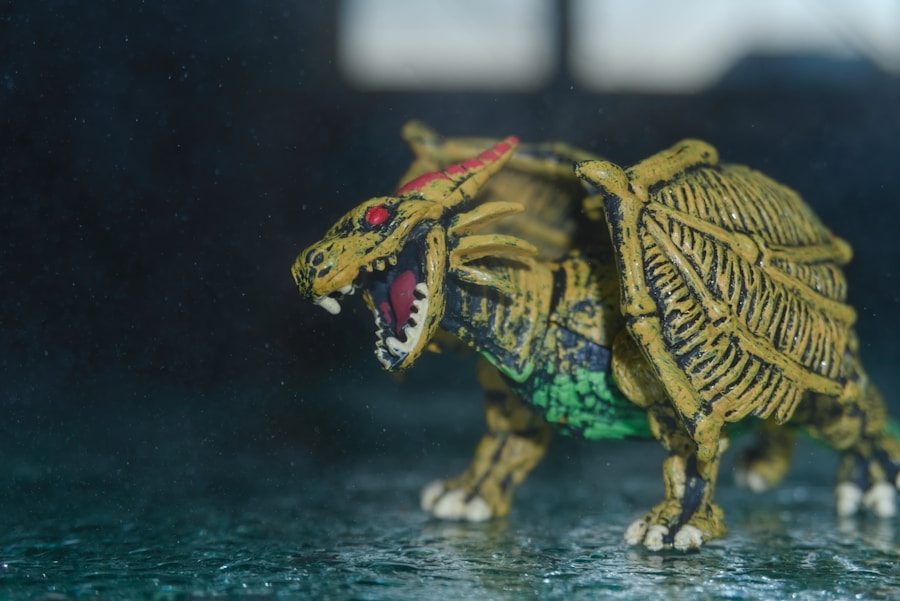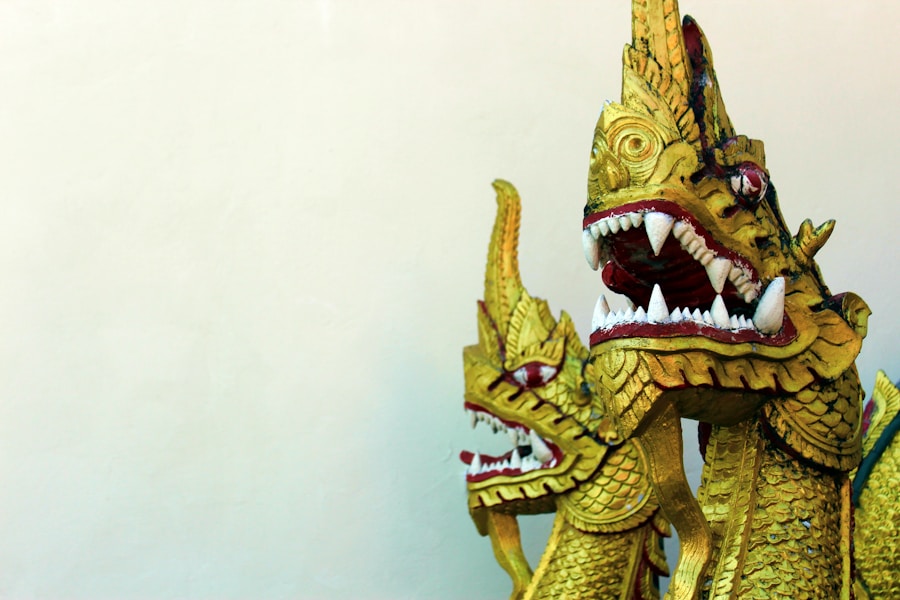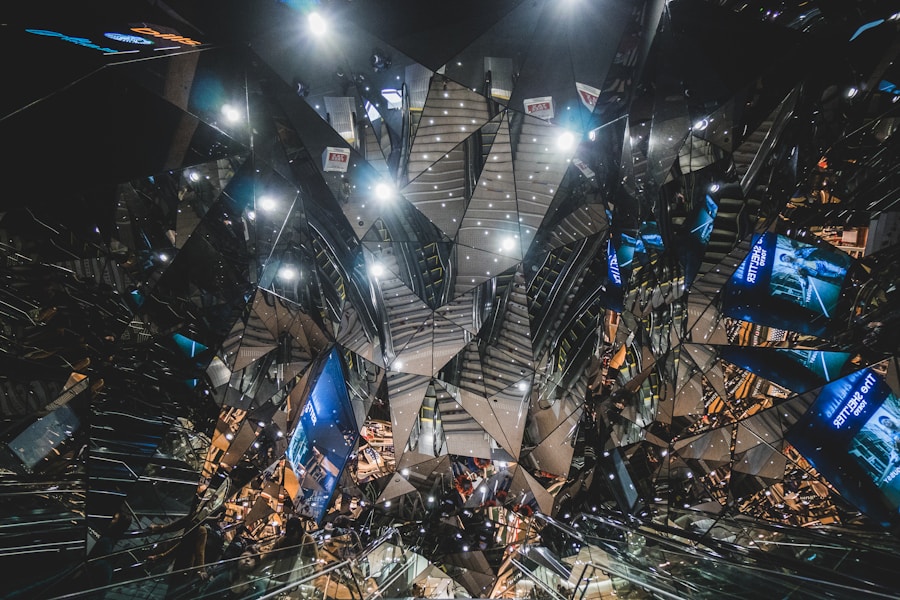The concept of kaiju, or giant monsters, has its roots deeply embedded in Japanese culture and folklore. You might find it fascinating that these colossal creatures often symbolize humanity’s struggle against nature and the consequences of technological advancement. The term “kaiju” itself translates to “strange beast,” and it first gained prominence in the mid-20th century, particularly with the release of “Godzilla” in 1954.
This film was not merely a monster movie; it was a poignant commentary on the horrors of nuclear warfare, reflecting the anxieties of a nation recovering from World War
In the years following “Godzilla,” other kaiju began to emerge, each with their own unique characteristics and narratives. You may be intrigued to learn that these creatures often represented various aspects of human emotion and societal issues. For instance, Mothra, introduced in 1961, embodied themes of environmentalism and the need for harmony with nature.
As you explore these origins, you’ll see how kaiju became a canvas for filmmakers to express their thoughts on war, pollution, and the fragility of life itself. The birth of kaiju was not just about creating fearsome beasts; it was about giving voice to the collective anxieties of a generation.
Key Takeaways
- Kaiju, or giant monsters, have their origins in Japanese folklore and mythology, with early influences from creatures like the dragon and the oni.
- The evolution of kaiju has seen a shift from actors in rubber suits to the use of cutting-edge CGI technology, creating more realistic and visually stunning spectacles.
- Iconic kaiju such as Godzilla, Mothra, and King Ghidorah have left a lasting impact on popular culture and continue to be beloved by fans around the world.
- Kaiju have had a significant influence on film, TV, and video games, with their presence being felt in various genres and mediums.
- The future of kaiju looks promising, with new films and reboots in the works, ensuring that monster mayhem will continue to captivate audiences for years to come.
The Evolution of Kaiju: From Rubber Suits to CGI Spectacles
As you trace the evolution of kaiju films, you’ll notice a remarkable transformation in both technology and storytelling. Initially, filmmakers relied on practical effects, often using actors in elaborate rubber suits to bring these monsters to life. This method, while limited by today’s standards, had its own charm and creativity.
You can appreciate the artistry involved in crafting these suits, which required immense skill and imagination. The physicality of actors like Haruo Nakajima, who portrayed Godzilla for nearly two decades, added a tangible presence to these creatures that CGI sometimes struggles to replicate. However, as technology advanced, so did the portrayal of kaiju.
The introduction of computer-generated imagery (CGI) revolutionized the genre, allowing filmmakers to create more dynamic and visually stunning monsters. You might find it exciting to see how films like “Pacific Rim” and the recent “Godzilla” series have utilized CGI to push the boundaries of what is possible on screen. This evolution has not only enhanced the visual spectacle but also allowed for more complex narratives that delve deeper into the characters behind the monsters.
As you watch these modern interpretations, consider how they balance the legacy of traditional kaiju films with contemporary storytelling techniques.
Iconic Kaiju: A Look Back at the Most Memorable Monsters

When you think of iconic kaiju, several names likely come to mind immediately. Godzilla is undoubtedly at the forefront, a cultural icon that has transcended generations. You may appreciate how Godzilla’s character has evolved from a terrifying force of destruction to a more nuanced figure that sometimes embodies heroism.
This transformation reflects changing societal attitudes and the desire for more complex narratives surrounding these creatures. Other memorable kaiju include King Kong, who, while not originally a Japanese creation, has become an integral part of the kaiju lexicon. His story resonates with themes of beauty and tragedy, showcasing the conflict between nature and civilization.
You might also consider Gamera, the giant turtle who became a beloved figure in his own right, often portrayed as a protector of humanity. Each of these monsters carries its own legacy and significance, contributing to the rich tapestry of kaiju lore. As you explore their stories, you’ll find that they are not just monsters; they are reflections of our fears, hopes, and dreams.
Kaiju in Pop Culture: How Giant Monsters Have Influenced Film, TV, and Video Games
| Year | Movie Title | Box Office Gross (in millions) |
|---|---|---|
| 1954 | Godzilla | 2.25 |
| 2014 | Godzilla | 529.1 |
| 2019 | Godzilla: King of the Monsters | 386.6 |
| 1998 | Godzilla | 379 |
| 2013 | Pacific Rim | 411 |
| 2018 | Pacific Rim: Uprising | 290.9 |
The influence of kaiju extends far beyond cinema; it has permeated various aspects of pop culture, including television and video games. You may have noticed how shows like “Attack on Titan” and “Pacific Rim: The Black” draw inspiration from kaiju mythology, incorporating giant creatures into their narratives. This trend highlights the enduring appeal of these monsters and their ability to captivate audiences across different mediums.
In video games, kaiju have become a popular theme as well. Titles like “Monster Hunter” and “Godzilla: Destroy All Monsters” allow players to engage with these colossal beings in interactive ways. You might find it thrilling to battle against or control these monsters in virtual environments, experiencing the sheer scale and power they represent.
As you explore this intersection of kaiju and pop culture, consider how these creatures have become symbols of adventure and conflict, resonating with audiences around the world.
The Future of Kaiju: What’s Next for Monster Mayhem
As you look ahead to the future of kaiju films and media, there are exciting possibilities on the horizon. With advancements in technology and storytelling techniques, filmmakers are poised to explore new narratives that challenge traditional tropes. You may be intrigued by the potential for more diverse representations within the genre, as creators from various backgrounds bring their unique perspectives to kaiju stories.
Moreover, the rise of streaming platforms has opened up new avenues for kaiju content. You might find it fascinating that series like “Godzilla Singular Point” have begun to explore more intricate plots and character development over longer formats. This shift allows for deeper exploration of themes such as environmentalism and humanity’s relationship with nature—issues that resonate strongly today.
As you anticipate what’s next for kaiju, consider how these stories will continue to evolve while remaining rooted in their rich history.
One of the most captivating aspects of kaiju films is their frequent pairing with mecha—giant robots designed to combat these monstrous threats. This dynamic creates an exhilarating clash between nature and technology that resonates with audiences on multiple levels. You may find yourself drawn to this juxtaposition; it raises questions about humanity’s reliance on technology in the face of overwhelming natural forces.
The battles between kaiju and mecha often serve as metaphors for larger societal issues. For instance, they can symbolize humanity’s struggle against its own creations or highlight the consequences of unchecked technological advancement. As you watch these epic confrontations unfold on screen, consider how they reflect our fears and aspirations regarding progress and destruction.
The enduring appeal of this genre lies not only in its thrilling action but also in its ability to provoke thought about our place in an ever-evolving world.
The Global Impact of Kaiju: How Monster Movies Have Transcended Borders

Kaiju films have made a significant impact on global cinema, transcending cultural boundaries and resonating with audiences worldwide. You might be surprised to learn that while kaiju originated in Japan, their influence can be seen in films from various countries, each adding its unique twist to the genre. This cross-cultural exchange has enriched the narrative possibilities surrounding giant monsters.
As you explore this global phenomenon, consider how films like “Shin Godzilla” have redefined what a kaiju film can be by incorporating contemporary political commentary relevant to Japanese society today. Similarly, Hollywood adaptations have introduced kaiju to new audiences while often blending elements from different cultures. This fusion creates a rich tapestry that celebrates diversity while maintaining the core themes that make kaiju so compelling.
As you engage with these films from around the world, you’ll appreciate how they reflect universal fears and desires through the lens of monstrous storytelling.
Kaiju Fandom: Celebrating 70 Years of Monster Mayhem
The kaiju fandom is a vibrant community that has flourished over decades, celebrating 70 years of monster mayhem with enthusiasm and creativity. You may find it inspiring how fans come together through conventions, online forums, and social media platforms to share their love for these colossal creatures. This sense of community fosters connections among individuals who share a passion for all things kaiju.
As you delve into this fandom, consider how it has evolved over time—from collecting memorabilia and attending screenings to creating fan art and engaging in cosplay. The creativity within this community is boundless; fans often reinterpret classic stories or create entirely new narratives featuring their favorite monsters. This celebration of kaiju culture not only honors its rich history but also ensures its continued relevance in contemporary society.
As you engage with this passionate community, you’ll discover that kaiju are more than just monsters; they are symbols of creativity, resilience, and shared experiences that unite fans across generations. In conclusion, exploring the world of kaiju reveals a rich tapestry woven from cultural history, technological evolution, and societal reflection. From their origins as symbols of fear to their evolution into beloved icons within pop culture, giant monsters continue to captivate our imaginations.
As you look toward the future, consider how these creatures will adapt and thrive in an ever-changing landscape while remaining true to their roots as powerful representations of humanity’s struggles and triumphs.
